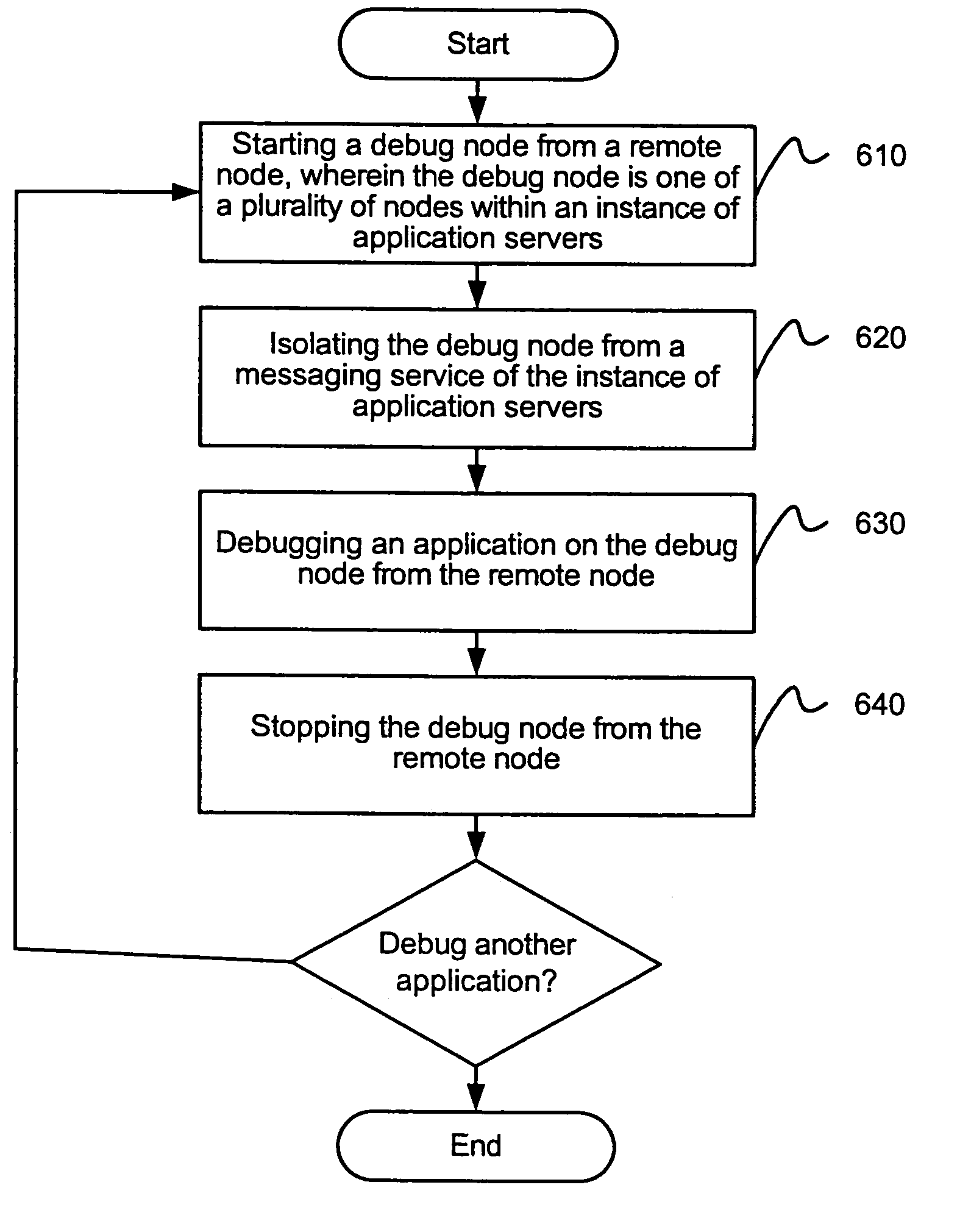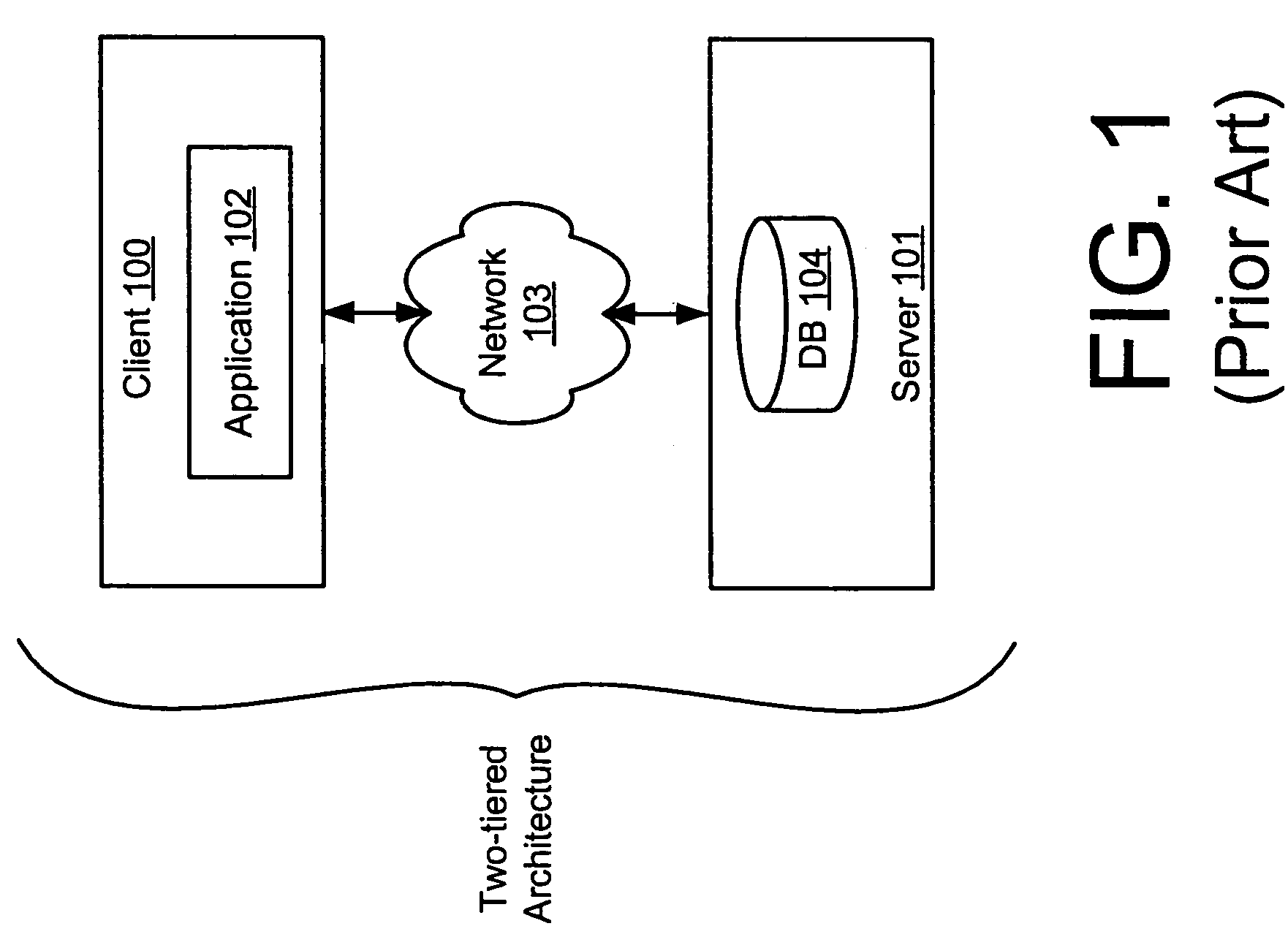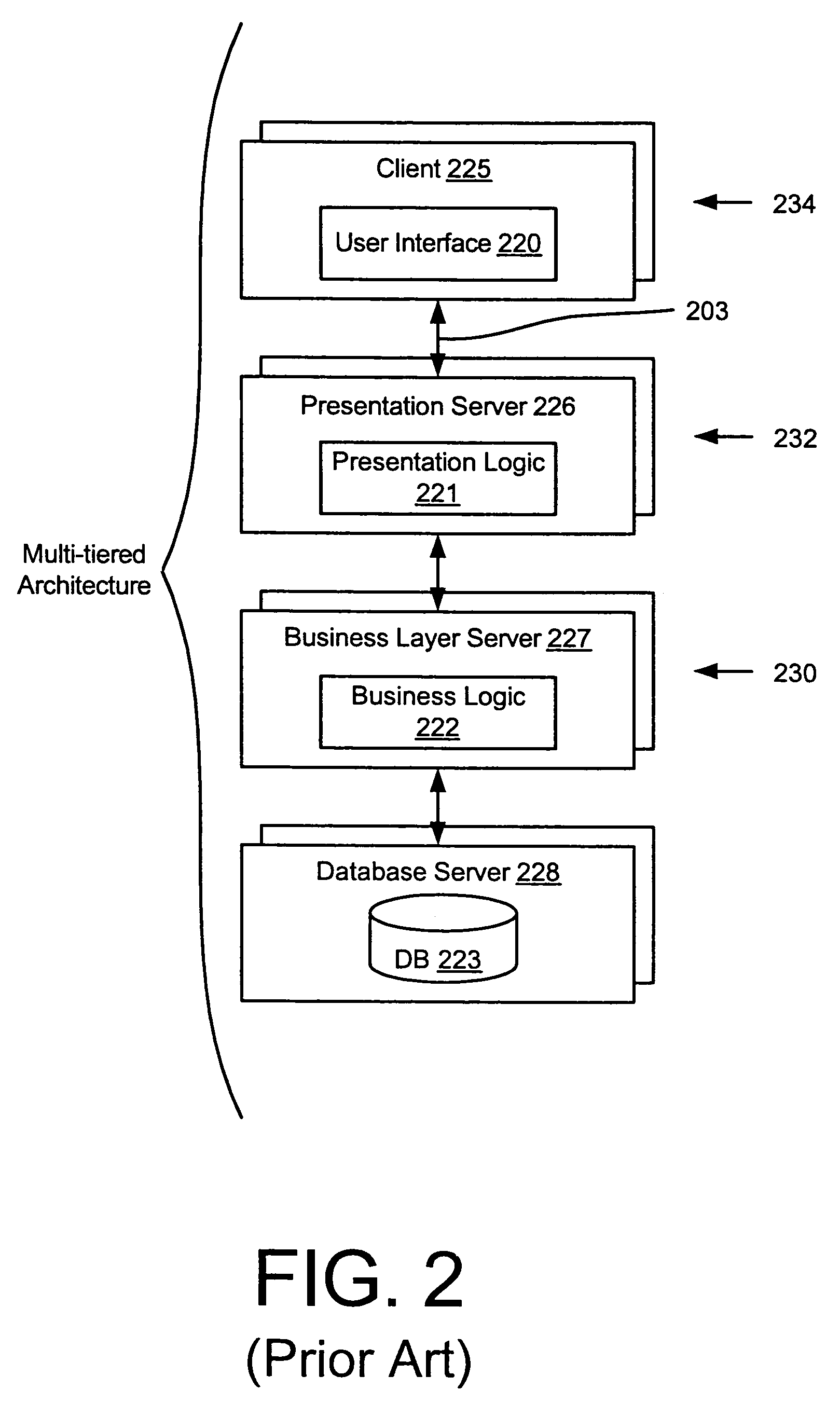Remote debugging
a data processing system and remote debugging technology, applied in the field of remote debugging data processing systems, can solve the problems of a large number of different clients, the limitations of the two-tiered architecture, and the inability to install and maintain up-to-date client-side applications,
- Summary
- Abstract
- Description
- Claims
- Application Information
AI Technical Summary
Benefits of technology
Problems solved by technology
Method used
Image
Examples
Embodiment Construction
[0018]Embodiments of the invention are generally directed to a system and method for remotely debugging a data processing system. In an embodiment, an instance of application servers includes a debug node. In an embodiment, the debug node is isolated from a load-balancing mechanism used to distribute service requests. The debug node may also be isolated from the central message passing architecture. As is further described below, a remote node may then debug an application on the debug node, without disrupting processes executing on other application servers in the instance.
[0019]A system architecture according to one embodiment of the invention is illustrated in FIG. 3. The architecture includes a central services instance 300 and a plurality of application server instances 310, 320. As used herein, the application server instances, 310 and 320, each include a group of application servers 314, 316, 318 and 324, 326, 328, respectively, and a dispatcher, 312, 322, respectively. The c...
PUM
 Login to View More
Login to View More Abstract
Description
Claims
Application Information
 Login to View More
Login to View More - R&D
- Intellectual Property
- Life Sciences
- Materials
- Tech Scout
- Unparalleled Data Quality
- Higher Quality Content
- 60% Fewer Hallucinations
Browse by: Latest US Patents, China's latest patents, Technical Efficacy Thesaurus, Application Domain, Technology Topic, Popular Technical Reports.
© 2025 PatSnap. All rights reserved.Legal|Privacy policy|Modern Slavery Act Transparency Statement|Sitemap|About US| Contact US: help@patsnap.com



